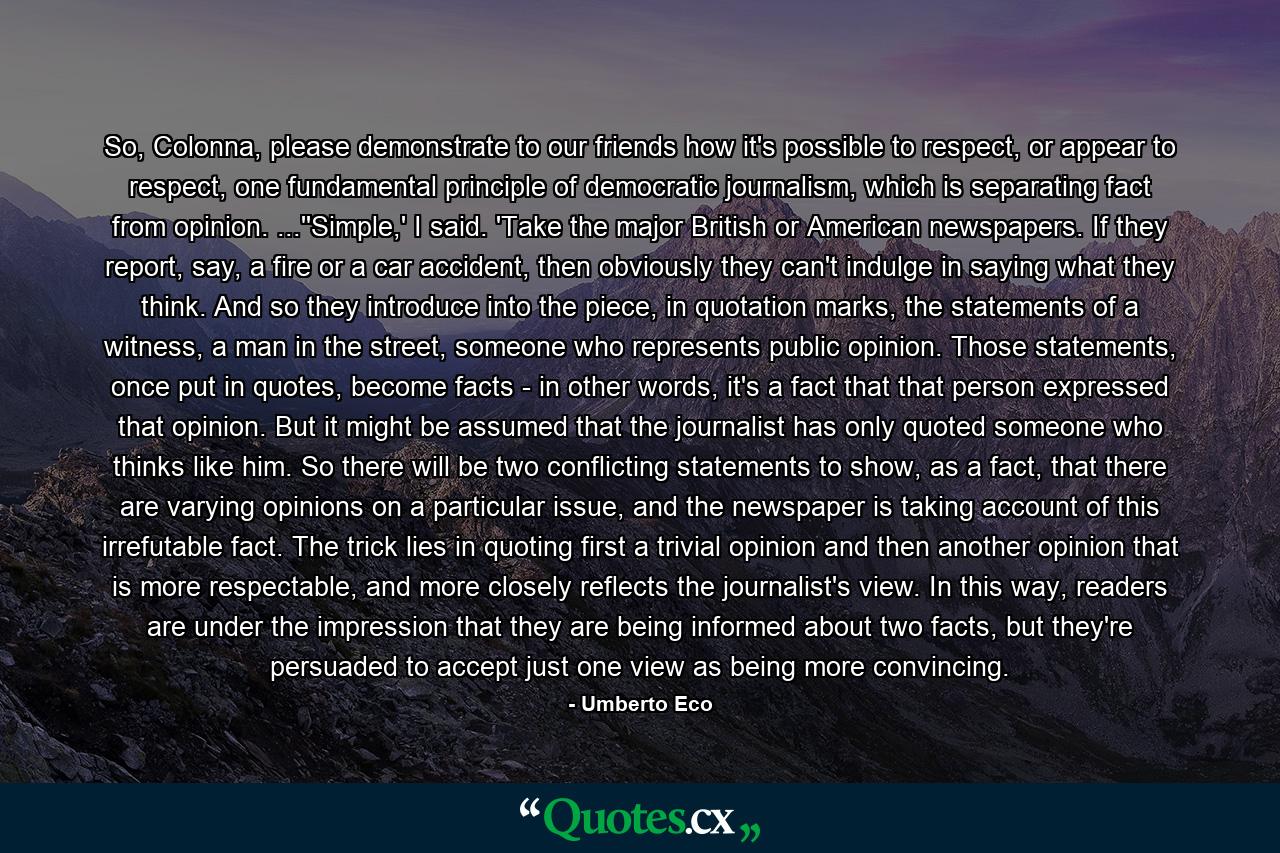So, Colonna, please demonstrate to our friends how it’s possible to respect, or appear to respect, one fundamental principle of democratic journalism, which is separating fact from opinion. …”Simple,’ I said. ‘Take the major British or American newspapers. If they report, say, a fire or a car accident, then obviously they can’t indulge in saying what they think. And so they introduce into the piece, in quotation marks, the statements of a witness, a man in the street, someone who represents public opinion. Those statements, once put in quotes, become facts – in other words, it’s a fact that that person expressed that opinion. But it might be assumed that the journalist has only quoted someone who thinks like him. So there will be two conflicting statements to show, as a fact, that there are varying opinions on a particular issue, and the newspaper is taking account of this irrefutable fact. The trick lies in quoting first a trivial opinion and then another opinion that is more respectable, and more closely reflects the journalist’s view. In this way, readers are under the impression that they are being informed about two facts, but they’re persuaded to accept just one view as being more convincing.
